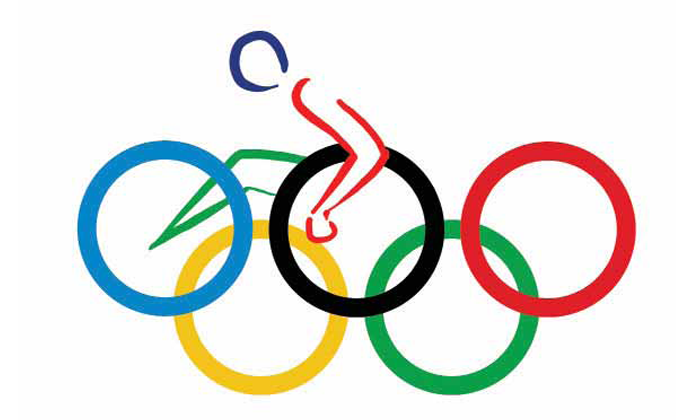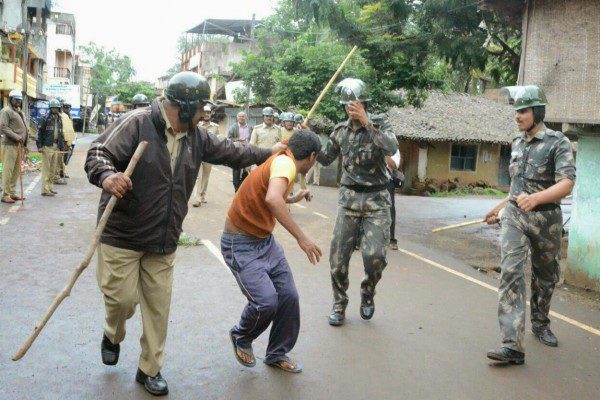44 years ago, in 1968, two black American athletes, Tommie Smith and John Carlos, created history by staging a protest against racial discrimination the sporting world; a protest that hadn’t been witnessed earlier. And now, in 2012, in the midst of the glittering opening and closing ceremonies, the sporting world witnessed a protest against injustices towards the disabled – a week-long protest led by disabled activists against the association of AtoS (Société Anonyme) with the Paralympic games, but given a miss by disabled athletes. AtoS, many say are responsible for ruining the lives of countless disabled people throughout UK.
Unlike the protest in 1968, which sparked a drastic change in sporting colours, there seems to be little chance of a similar one against disability discrimination. After all, the medal winners of London Paralympics 2012, who participated in the grandest of all Paralympics till date, did not protest.
While the majority of the Indian contingent cried foul for not being provided with individual escorts and blamed their losses for the absence of coaches, there were other incidents occurring in the London 2012 games village which, I believe, shake the foundational idea of the Paralympics – games which celebrate the spirit of the physically disabled.
The London Paralympics were no less competitive than the Olympics held there earlier this summer. The Paralympics were the largest ever, with 4,200 athletes competing in 20 sports. Some were in wheelchairs, some were wholly or partially blind, some had locomotor impairment, some had short stature ( the Paralympic Association chart uses terms like ‘dwarfism’), some had intellectual disability, some had complex coordination and muscle-control problems, and some had multiple sclerosis and so on.
Each of these 4,200 athletes were assigned their respective categories after examining them as per the classifiers. The classifiers, as they are called, must ensure that athletes compete against others with similar levels of ability, rather disability. They are exercises in physical examination and assessments that exist nowhere else in sports.
“There are limitations to the system, but you have to draw the line somewhere,” says Peter Van de Vliet,IPC chief medical officer.
Generally, paralympians are assessed for their categories before the qualifying for the games begin. But in London 2012, around 200 para-athletes had to be reassessed at the village, as they seemed to be too ‘able’ for one category, and too ‘disabled’ for the other. Forty of them were moved to different categories, and as reports say, eight of them were sent back, citing reasons like they didn’t meet “the minimal disability criterion”.
This classification process is different and unique for each sport. Anthony Dawson, who has cerebral palsy and little muscle function on his right side, rode for South Africa in the equestrian dressage competition at the Paralympics. In the summer of 2011, he was in a fix, as after attending his classification tests, he wasn’t sure about which category he would be participating in. “They were saying that I’m too able for Grade II. But Grade II is by far the most diverse grade, and that’s where I’ve always been placed,” he told The New York Times.
These classifications are meant to ensure fair play in the grouping of athletes, based on their “disability quotient”. But they are not meant to categorize these para-athletes, based on their sporting prowess.
The London Paralympic games also witnessed the re-entry of the games for the intellectually disabled, after the 1996 games. For any intellectually disabled athtlete, to prove himself/herself thus is the toughest task of them all. You undergo more screenings than the normal athletes do, you have to prove that your IQ levels are below 75, that you acquired your present situation before turning 18, the doctor’s certificate won’t do, and you also have to prove that your impairment affects your sporting performance…
Pacing— when a runner moderates his or her speed to avoid flagging before the end of the race— is a challenge for the intellectually disabled athletes. Under the current eligibility clauses, someone who is brilliant at pacing would not be eligible.
“There are limitations to the system, but you have to draw the line somewhere,” says Peter Van de Vliet,IPC chief medical officer.
Of course, there are limitations to all systems, and athletes can always register complaints if they are not satisfied with their classifications. But how would that really help Donna Ponessa, a rider in the USA team, who had to repeatedly complain and still undergo repeated classification tests since last summer, and still remain in uncertainty a week prior to her event? How would it help Mallory Weggemann, a para-swimmer who was abruptly thrown into the S8 category, when she has always swum in the S7 category? The officials had questions on her ‘ability’, they believed she was too ‘able’ for S7, and she knows she is comparatively more disabled than her competitors in S8. And her 15 world records have also been stripped off her. There are athletes, who are stripped off their records and medals for the consumption of performance enhancing drugs, and then there are athletes like Mallory…
While the Paralympic Association’s classification policies can be termed discriminatory, to say the least, their choice of sponsors is simply inhuman. AtoS and Dow Chemicals. I beg to differ with the organising committee who thought of such companies as appropriate sponsors. AtoS has been declaring people with disabilities fit for work in order to skimp on state benefits. And how on earth do you justify the choice of Dow as your partners in celebrating the spirit of the disabled? In what is a bitter irony, whist reaping the PR benefits of association with the 2012 Paralympics, the Dow Chemical Corporation is directly responsible for generation after generation wracked by disability in Bhopal and Vietnam. If there was an awards ceremony for unacceptable sponsors for sporting events, Dow would probably be a shoo-in for gold, with AtoS closing in at silver.
While the choice of such sponsors for London 2012 shall forever be criticised, one also has to appreciate the coverage and popularity the Paralympics have received this time round. But to ensure that the Paralympics graduate from being a weak sidekick to the Olympics into a standalone show, which celebrates human spirit, the Paralympic Association and its associate bodies will have to clear the air of confusion surrounding the definitions of ‘ability’ and ‘disability’… definitions laid down by them. If the top of S7 coincides with the bottom of S8, then the lines need to be more prominently drawn. If medical certificates aren’t good enough to prove a para-athlete’s disability, then what is? If the official classification processes cannot provide with definite results, then what can? These and many other questions are in dire need of answers… as these are questions of the wheelchair bound shot-putter, of the pole vaulter suffering from ‘dwarfism’, of the shooter without or with partial vision… of the disabled who dedicates his life for that single shot at glory.


